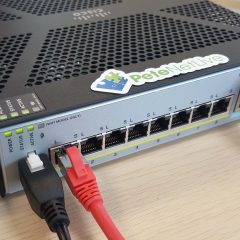Cisco ASA 8.2 Upgrade to 8.3
KB ID 0001366 Problem I can’t believe I’m writing this, it’s been so long since 8.3 was released (7 Years!) And still there’s firewalls out there running old code? Why is the 8.3 upgrade important? This update made some very major changes to the way we did NAT, and also the way we wrote ACL’s. It was a big change. I remember keeping my client firewalls on 8.2 for a while until I fully understood the...
Cisco ASA 5505 Routing Between Two (Internal) VLANS
KB ID 0000869 Problem I had to set this up for a client this week, I’ve setup a DMZ on a 5505 before and I’ve setup other VLANs to do other jobs, e.g. visitor Internet access. But this client needed a secondary VLAN setting up for IP Phones. In addition I needed to route traffic between both the internal VLANs. I did an internet search and tried to find some configs I could reverse engineer, the few I found were old (Pre version 8.3)...

